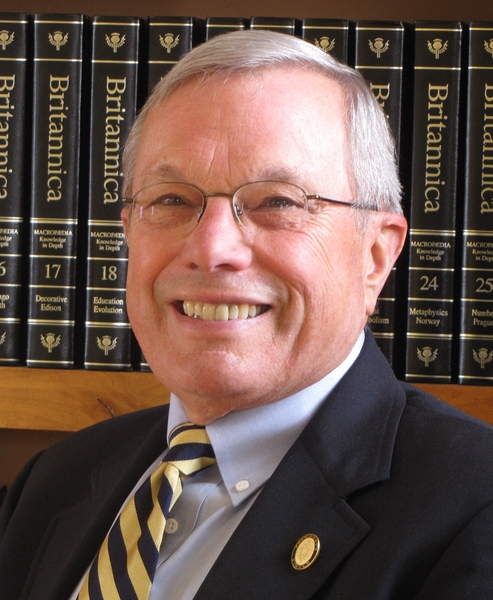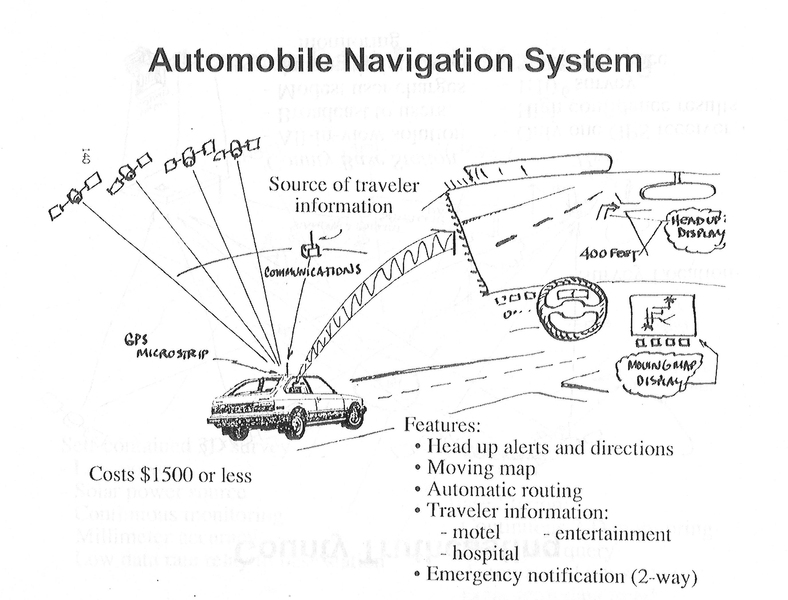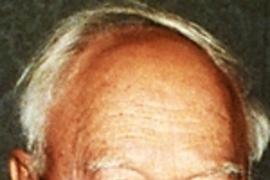Bradford Parkinson SM ’61, who received his master of science degree in the MIT Department of Aeronautics and Astronautics (AeroAstro), was honored last month with the Queen Elizabeth Prize for Engineering along with three colleagues responsible for creating the first truly global, satellite-based positioning system (GPS).
The Queen Elizabeth Prize is the world’s most prestigious engineering accolade, a £1 million (about $1.3 million) award that celebrates the global impact of engineering innovation on humanity. Parkinson was honored along with Hugo Fruehauf, Richard Schwartz, and James Spilker Jr., whose widow received the award, at Buckingham Palace in December from the Prince of Wales.
“This recognition reflects the responsibility incumbent upon those developing technology today to strive to do so for the good of humanity,” said Parkinson. “Day after day, we are astounded at the new ways in which people across the world use GPS. It is a ‘System for Humanity’ in each and every sense.”
The global positioning system represents a pioneering innovation which, for the first time, enabled free, immediate access to accurate position and timing information around the world. An estimated 4 billion people use GPS, and its applications range from navigation and disaster relief to climate monitoring systems, banking systems, and the foundation of tomorrow’s transport, agriculture, and industry.
Parkinson, often called the “father of GPS,” successfully built upon several separate systems to create the current GPS design. He directed the program and led the development, design, and testing of its key components, insisting that GPS needed to be intuitive and inexpensive, which is why it is accessible worldwide today. Leading the original advocacy for the system in 1973 as a U.S. Air Force colonel, he became the first director of the GPS Joint Program Office and led the original development of spacecraft, Master Control Station, and eight types of user equipment. He guided the program through the extensive test validation process, including being launch commander for the first GPS satellite launches.
“One of the most important things we had when the project started was a vision of world impact,” said Parkinson. “Without that inspiration, it would have been difficult for us to weather the storms of doing something for the first time. Back in 1978, I made a few drawings that depicted GPS applications that I could personally foresee; they included an automobile navigation system, semi-automatic air traffic control, and wide-area vehicle monitoring, that seem to be rather accurate 41 years later.”
GPS combines a constellation of at least 24 orbiting satellites with ground stations and receiving devices. Each satellite contains a set of atomic clocks that keep ultra-precise time down to a billionth of a second. The satellite broadcasts its time as well as a radio signal containing its location to GPS receivers on Earth, which require signals from at least four satellites to determine their position. GPS receivers measure the time delay in each signal to calculate the distance to each satellite, then use that information to pinpoint the receiver’s location on earth.
Using GPS technology, simple smartphone apps can track disease outbreaks, self-driving tractors can optimize crop harvests, and sports teams can improve team performance. New applications for GPS continue to revolutionize entire industries, and its annual economic value has been estimated to be $80 billion for the United States alone.
“This year’s laureates have demonstrated that engineering makes things happen. With the first global, satellite-based positioning system, they created an engineered system which provides free, immediate and accurate information about position and time, anywhere around the globe,” said Lord Browne of Madingley, chair of the Queen Elizabeth Prize for Engineering Foundation. “The world now depends on GPS completely and without exception. In honoring the 2019 prize winners, we hope to inspire the next generation of engineers to continue to push back the frontiers of the possible.”
A professor emeritus of aeronautics and astronautics at Stanford University, Parkinson received his undergraduate degree in engineering from the U.S. Naval Academy in 1957, his master’s degree at MIT, and his doctoral degree in aeronautics and astronautics from Stanford in 1966. During his military career, he served 21 years in the Air Force and five years In the U.S. Navy, retiring as a full colonel in 1978. At Stanford University, he led the development of many innovative applications of GPS, including: commercial aircraft (Boeing 737) blind landing using GPS alone, fully automatic GPS control of farm tractors on a rough field to an accuracy of two inches, and pioneering the augmentation to GPS (WAAS) that allows any user to achieve accuracies of two feet and very high levels of integrity assurance.










